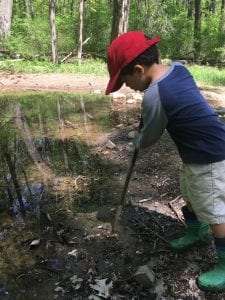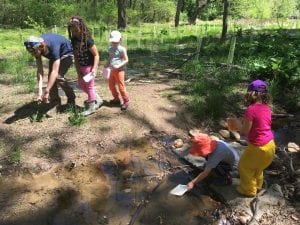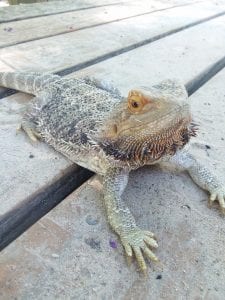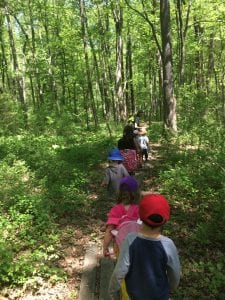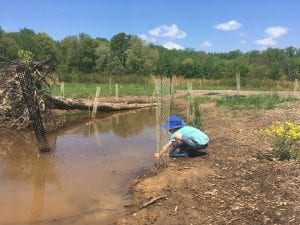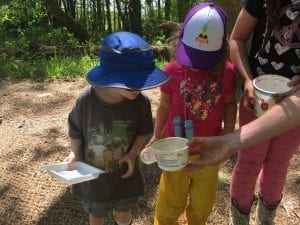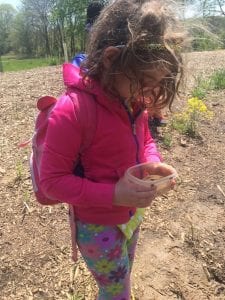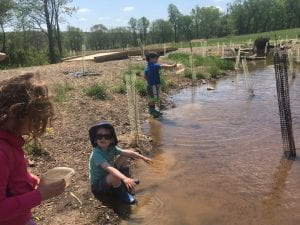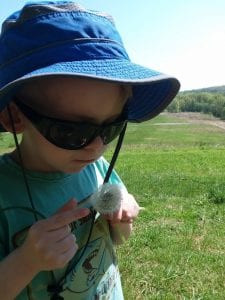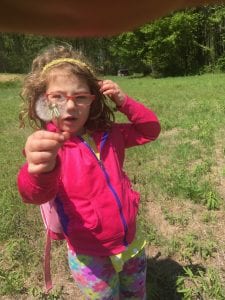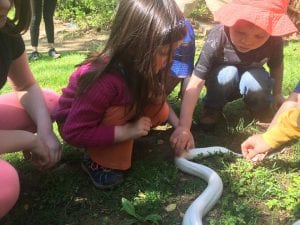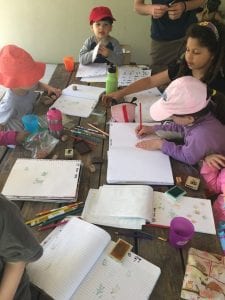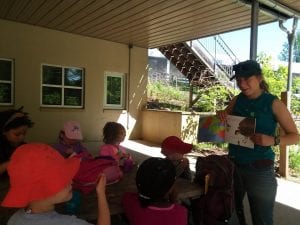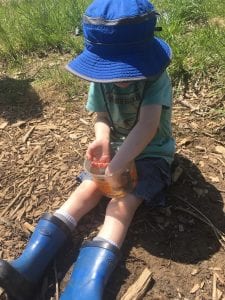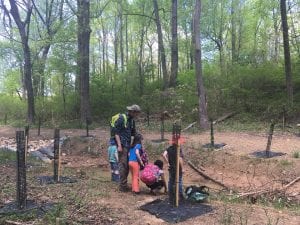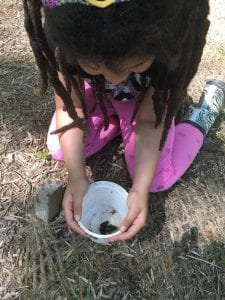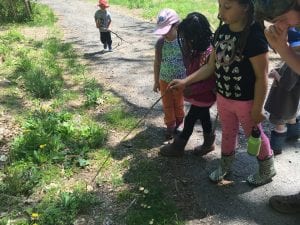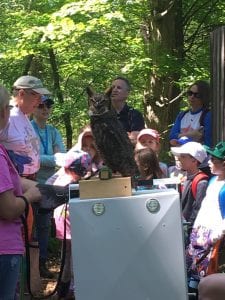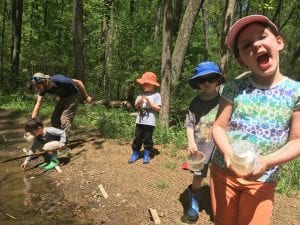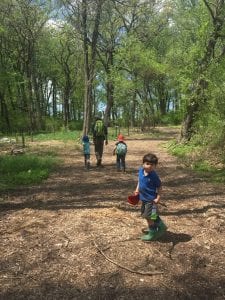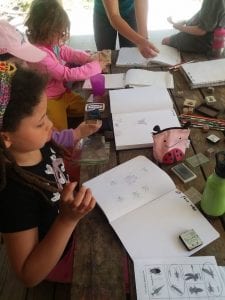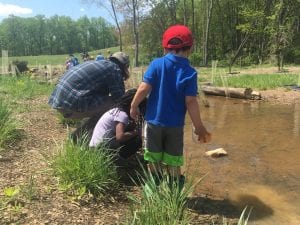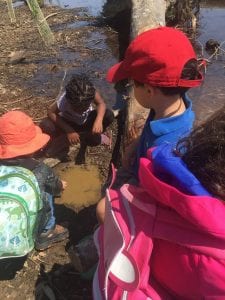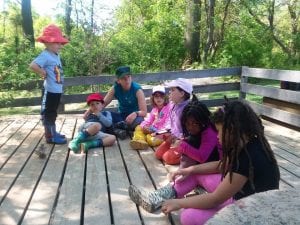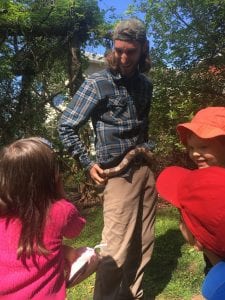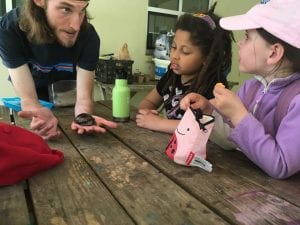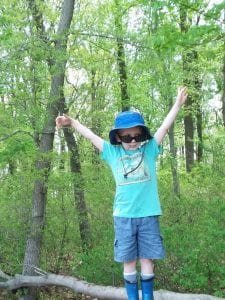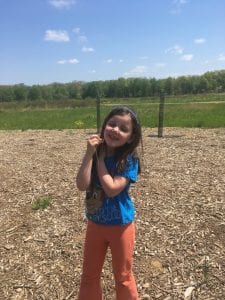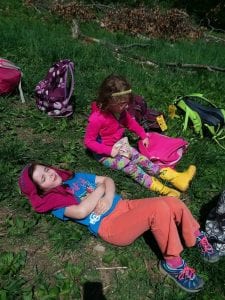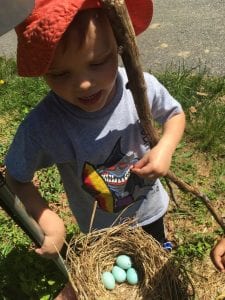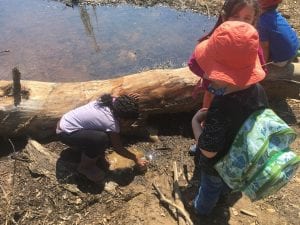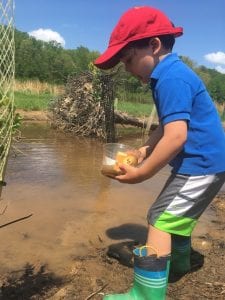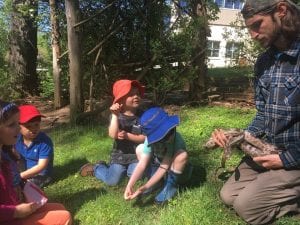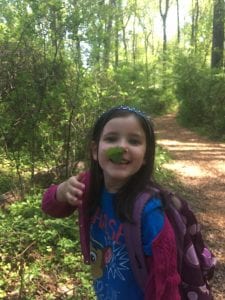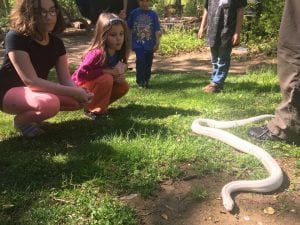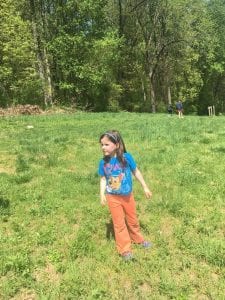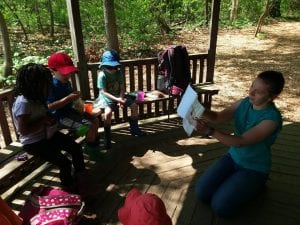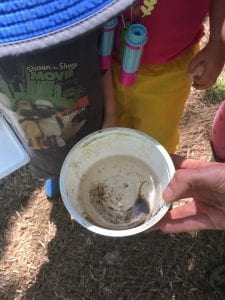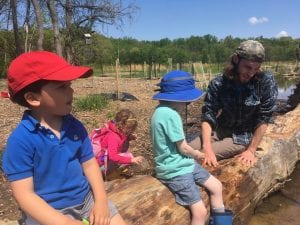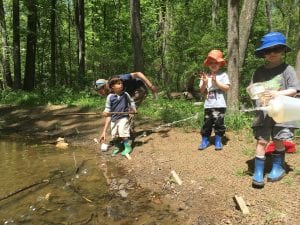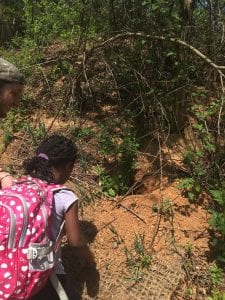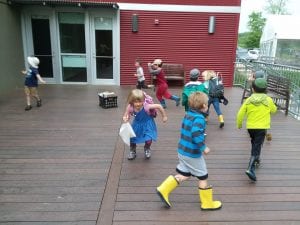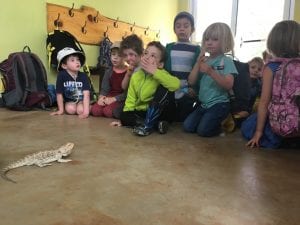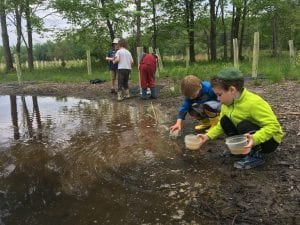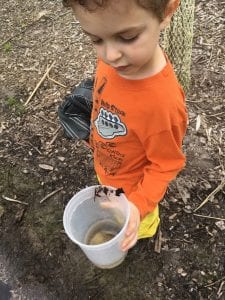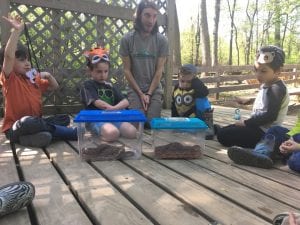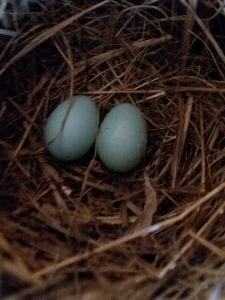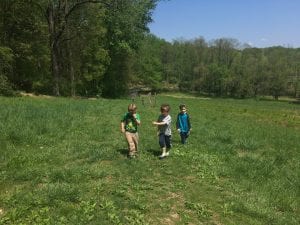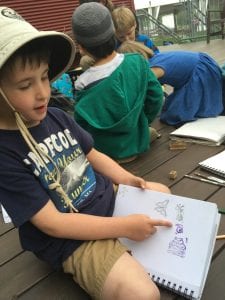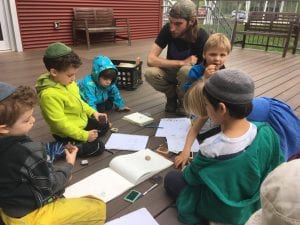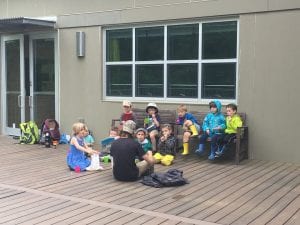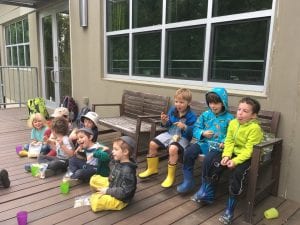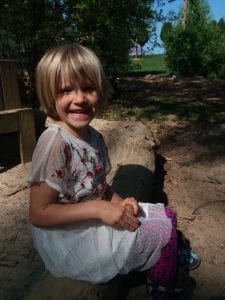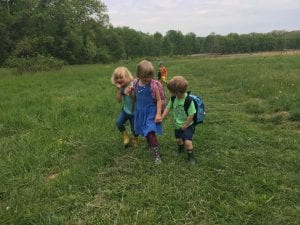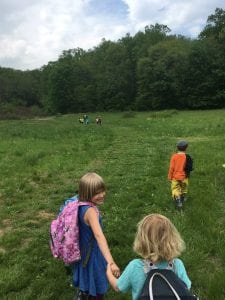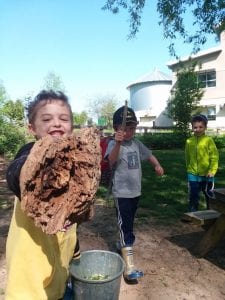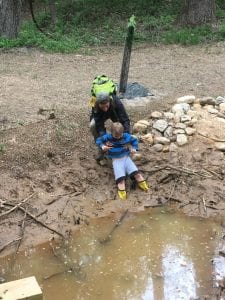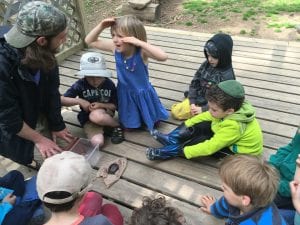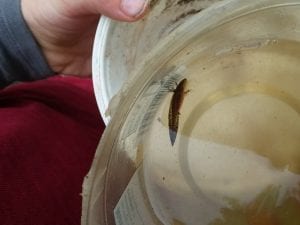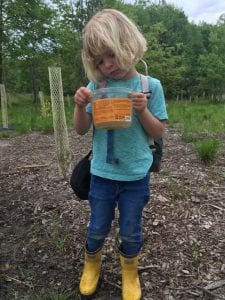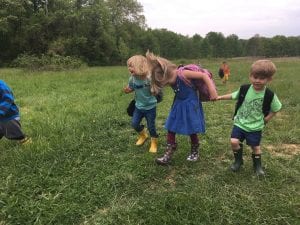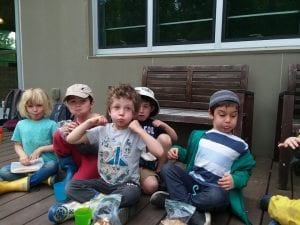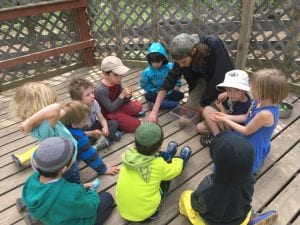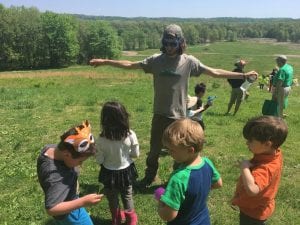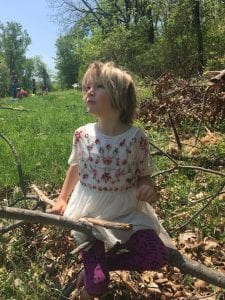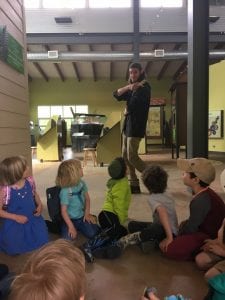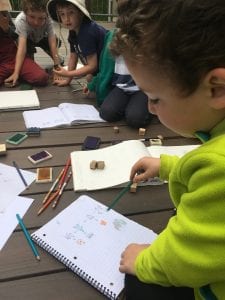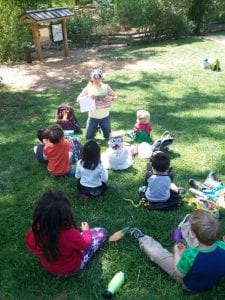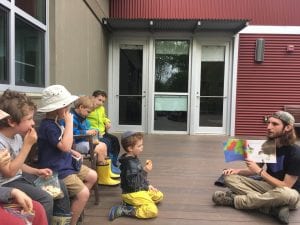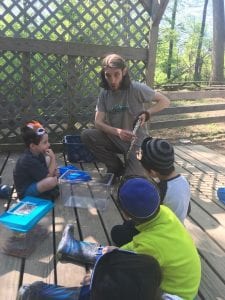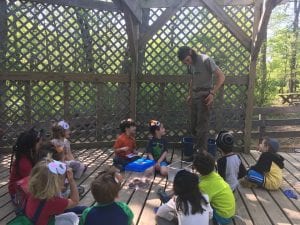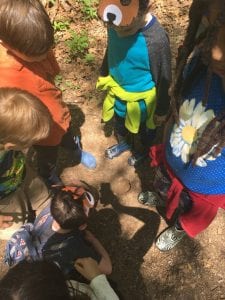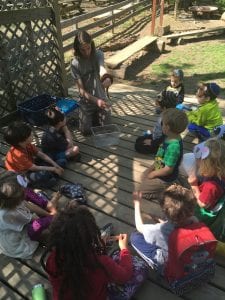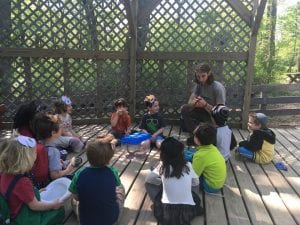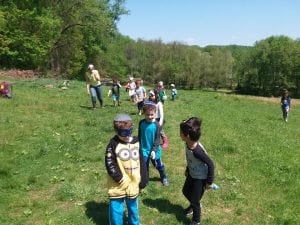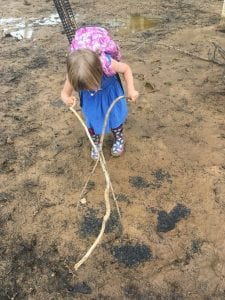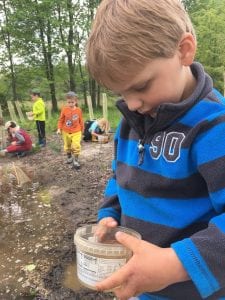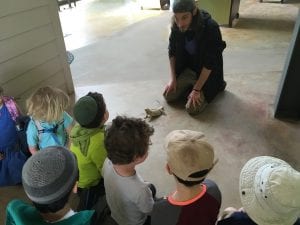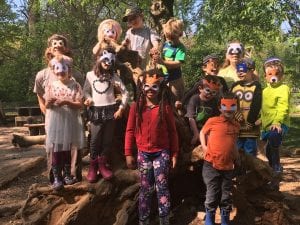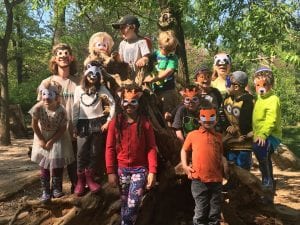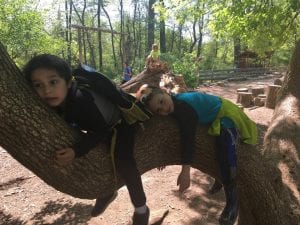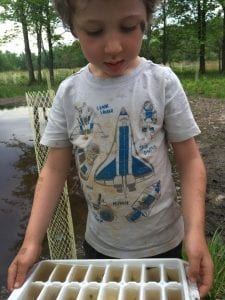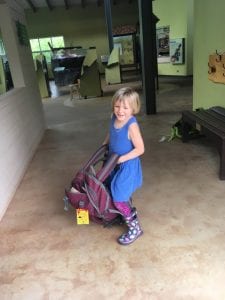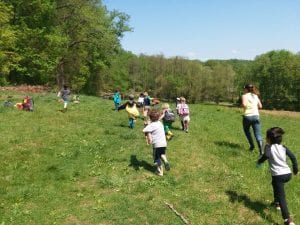This week we focused on reptiles and how they fit into food webs. We started by reading a story called About Reptiles: A Guide for Children by Cathryn Sill to build our base of knowledge about this group of animals. We talked about how they have dry, scaly skin, that they lay eggs, and that they are cold blooded. We thought of examples of animals that we know are reptiles: alligators, crocodiles, snakes, lizards and turtles. Luckily for us, there are quite a few reptiles that live at Irvine, so we were able to meet some reptile friends up close!
We had a visit from some snakes first. On Monday we met and compared the leucistic black rat snake and the grey rat snake, while on Tuesday we compared two different colorations of Corn Snake. It was fun to feel the snakes and compare that to the amphibians we touched a few weeks ago. We also had the chance to meet our Mud Turtle, Tiny, and our new lizard, the Bearded Dragon! While all of these animals differed in many ways, it was fun to see their reptile similarities as well.
We also talked about what the different reptiles might eat and who might eat them. We read a story called Who Eats What?: Food Chains and Food Webs by Patricia Lauber to learn about food webs. We realized that food webs are complex and cyclical. Webs may start with plants and end with a top predator, but we realized those predators will eventually die and the decomposers we explored a few weeks ago will come and eat them. These decomposers will create soil/food for plants, which the feed animals at the bottom of the food webs. With this knowledge, we used stamps to create food webs in our journals and shared those with each other.
We also spent much of this week pretending to be cold-blooded reptiles, enjoying and soaking up the energy from the sun. We used that energy to play games in the meadow and to look for animals down in the wetland areas. We found a ton of tadpoles and frogs, which are definitely part of many food webs. We decided a snake could definitely enjoy a tasty frog treat and snakes could be eaten by a bird of prey. It was great to make so many connections throughout the week to things we explored earlier this spring!
Mon/Wed:
- At the Water
- Attempting to Catch Frogs and Tadpoles
- Bearded Dragon!
- Boardwalk Trail
- Catching a Tadpole
- Caught a Tadpole
- Caught some Tadpoles
- Checking for Tadpoles and Frogs at the Wetland
- Dandelion Seeds!
- Dandelion Seeds
- Feeling the Snake’s Skin
- Food Web Journaling
- Food Web Story
- Forest Dreamer with a Tadpole
- Found some Frogs!
- Frog!
- Fungus Decomposers
- Great Horned Owl!
- Happy to be Here!
- Hiking
- Journals
- Looking in the Water
- Making sure we saved them all!
- Morning Meeting
- Mr. Travis has a Snake Belt!
- Mud Turtle Visit
- Mulch Pile King!
- Onion Grass Deoderant
- Reptiles Soaking up the Sun
- Robin Eggs
- Saving the Tadpoles
- Scooping up Some Water
- Second Snake Visit!
- Smelling the Mustard Leaf
- Snake Visit
- Soaking up the Meadow Sun
- StoryTime
- Tadpole
- Turtles on a Log Soaking up the Sun
- Water Time!
- Who Lives in this Hole?
Tues/Thurs:
- After Snack Races on the Deck
- Bearded Dragon looking at the Class
- Catching Tadpoles
- Caught Tadpoles!
- Corn Snake Visitors
- Eggs!
- Enjoying the Meadow
- Explaining his Food Web
- Food Web Journalling
- Food Web Story
- Forest Dreamers being Silly!
- Found the Perfect Rock
- Happy Friends
- Hiking through the Grass
- Minions!
- Mr. Travis Pulls a Forest Dreamer from the Mud!
- Mud Turtle Visitor
- Newt or Salamander Tadpole?
- Observing what She Caught
- Pretending to Sneeze and have Allergies!
- Puffer Fish
- Reptile Friend during Morning Circle
- Reptiles in the Sun!
- Riding her Horse!
- Second Reptile Friend
- Showing his Food Web
- Snack and Story
- Snack and Storytime
- Snake Belly
- Snake Belt
- Snake Hole
- Snake Time!
- Snake Visitor
- Soaking up Sun in the Meadow
- Tadpoles in a Dried up Pond
- Tadpoles!
- The Bearded Dragon
- The Forest Animals!
- The Gang!
- Tired Reptiles!
- Tray of Tadpoles
- Trying to Carry Ms. Tara’s Heavy Backpack!
- What Time is it Mr. Fox?
